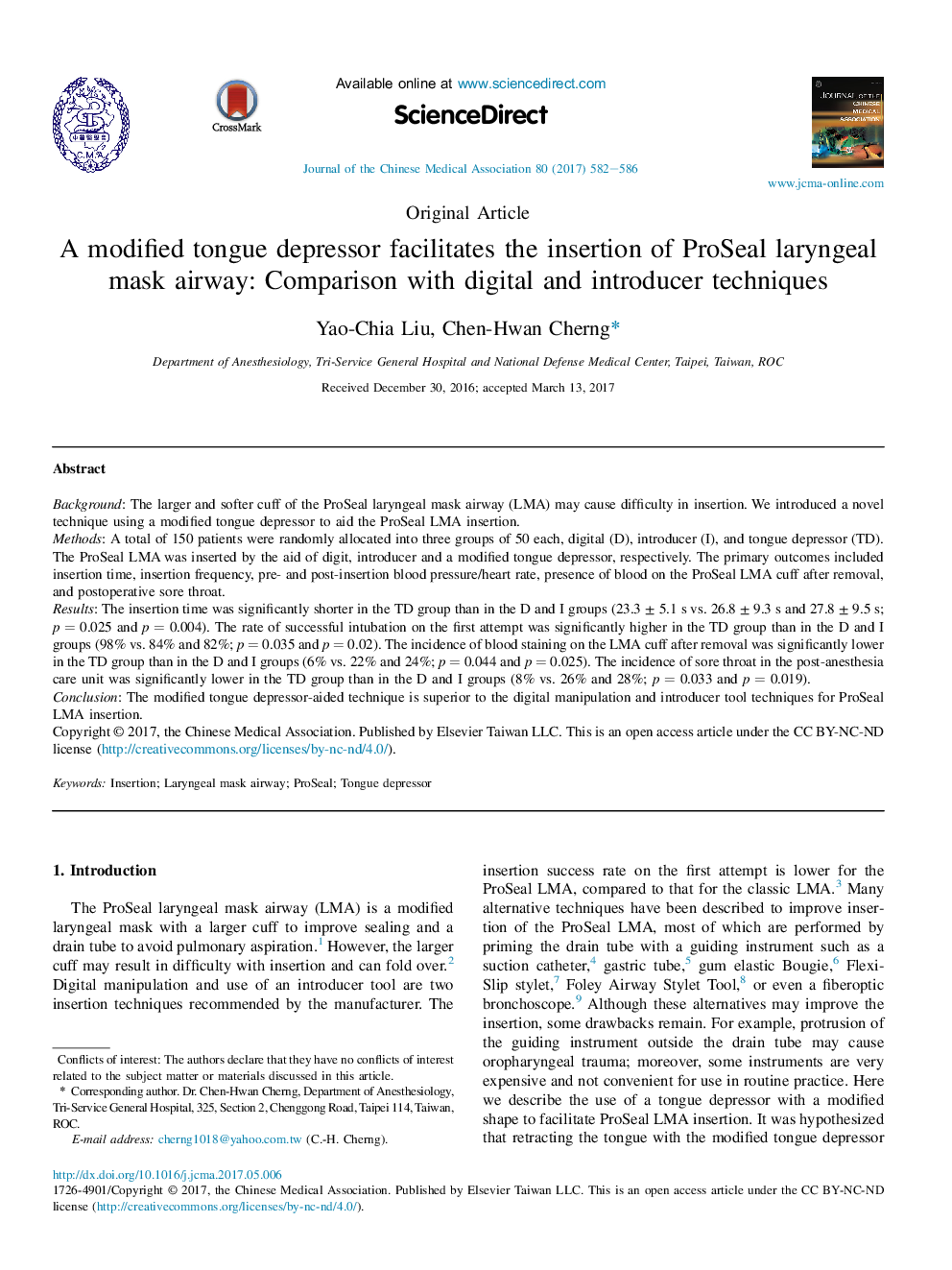| Article ID | Journal | Published Year | Pages | File Type |
|---|---|---|---|---|
| 5679662 | Journal of the Chinese Medical Association | 2017 | 5 Pages |
BackgroundThe larger and softer cuff of the ProSeal laryngeal mask airway (LMA) may cause difficulty in insertion. We introduced a novel technique using a modified tongue depressor to aid the ProSeal LMA insertion.MethodsA total of 150 patients were randomly allocated into three groups of 50 each, digital (D), introducer (I), and tongue depressor (TD). The ProSeal LMA was inserted by the aid of digit, introducer and a modified tongue depressor, respectively. The primary outcomes included insertion time, insertion frequency, pre- and post-insertion blood pressure/heart rate, presence of blood on the ProSeal LMA cuff after removal, and postoperative sore throat.ResultsThe insertion time was significantly shorter in the TD group than in the D and I groups (23.3 ± 5.1 s vs. 26.8 ± 9.3 s and 27.8 ± 9.5 s; p = 0.025 and p = 0.004). The rate of successful intubation on the first attempt was significantly higher in the TD group than in the D and I groups (98% vs. 84% and 82%; p = 0.035 and p = 0.02). The incidence of blood staining on the LMA cuff after removal was significantly lower in the TD group than in the D and I groups (6% vs. 22% and 24%; p = 0.044 and p = 0.025). The incidence of sore throat in the post-anesthesia care unit was significantly lower in the TD group than in the D and I groups (8% vs. 26% and 28%; p = 0.033 and p = 0.019).ConclusionThe modified tongue depressor-aided technique is superior to the digital manipulation and introducer tool techniques for ProSeal LMA insertion.
